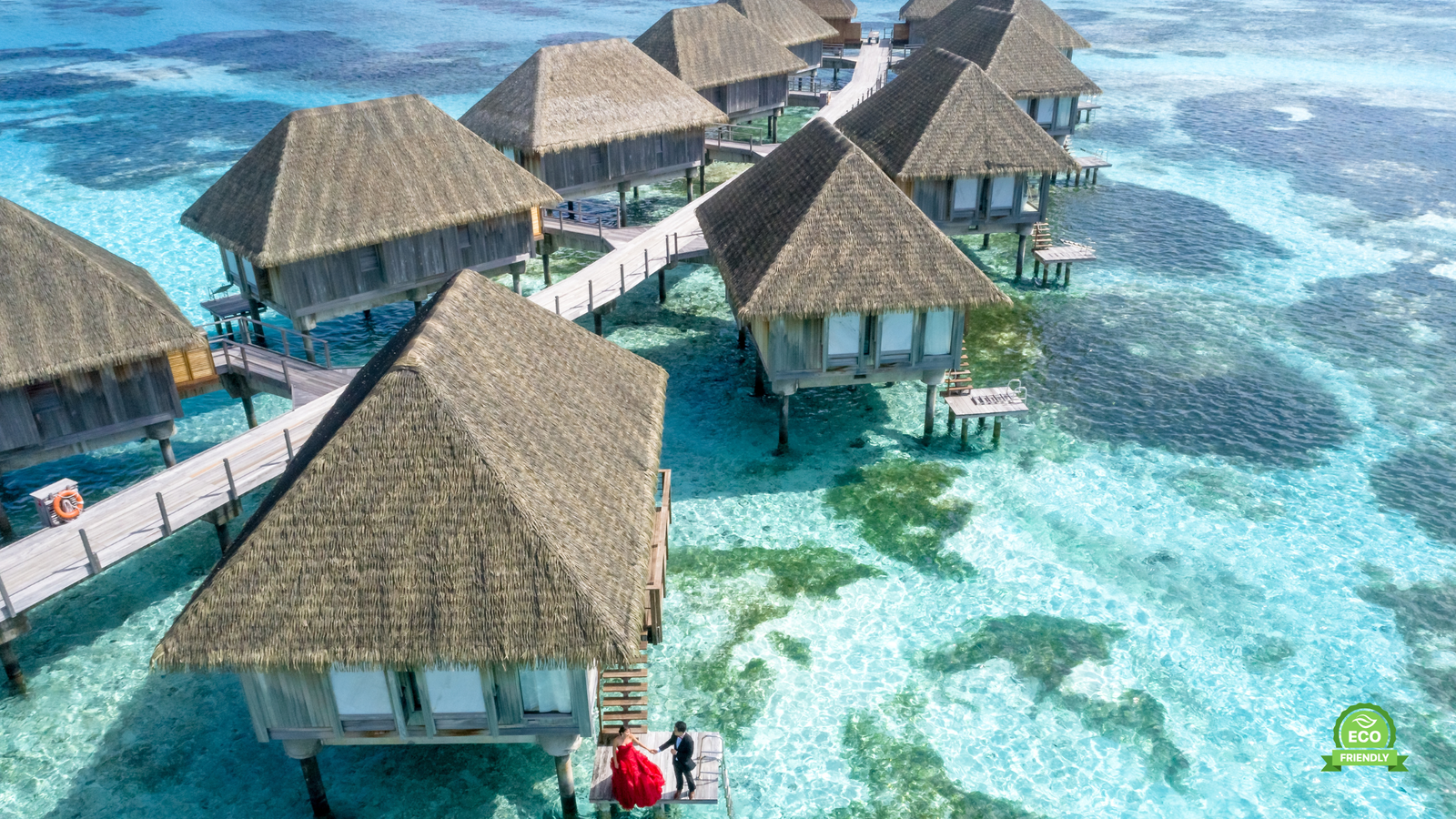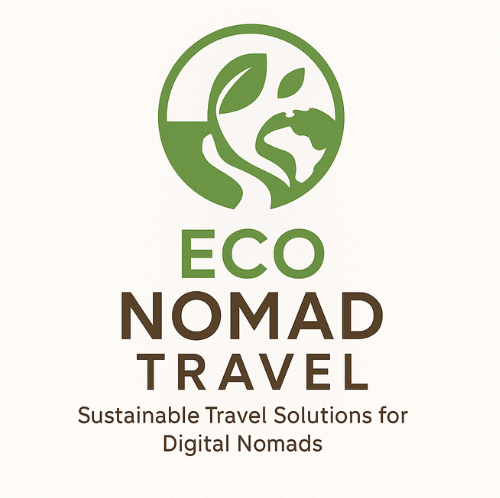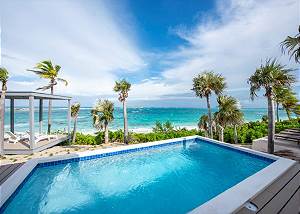
Low-Impact Island Travel Mediterranean 2025: Ferry-First Bases for Digital Nomads
Ferry-first Night trains Slow travel Digital nomads
Plan routes & tickets (ferries, rail, hotels)
Search on Trip.comLast-resort flights & car-lite options
Compare flights (Aviasales)Deep dives (internal guides)
Night Trains in Europe 2025Some links are affiliate. If you purchase through them, we may earn a commission—at no extra cost to you.
The Mediterranean in 2025 is shifting. Travelers are trading budget flights for ferry decks, airports for train stations, and tourist sprints for long, slow stays. This isn’t just nostalgia for the golden age of sea voyages—it’s part of a bigger movement: low-impact travel. For digital nomads, choosing ferry-first itineraries across Mediterranean islands means cutting carbon emissions, discovering communities more deeply, and enjoying a life paced by tides instead of takeoff schedules.
Why Low-Impact Island Travel Matters in 2025
The rise of slow travel & climate-conscious nomadism
Slow travel has matured into more than a trend—it’s now a necessity. Aviation remains one of the fastest-growing contributors to carbon emissions. With more rail networks reopening (see our guide to night trains in Europe 2025) and ferry routes expanding, travelers can realistically swap short-haul flights for surface travel. Digital nomads, often staying weeks or months at a time, are uniquely positioned to lead this transition. For context on impact, compare train vs. plane emissions and build smarter low-impact habits.
Why ferries beat flights for Mediterranean exploration
Ferries not only offer more sustainable connections but also smoother ones. Unlike airports tucked far outside cities, most ferry ports are woven into historic centers. You walk off the ship and straight into daily life: fresh markets, waterfront cafés, coworking hubs. For islands without airports—or those actively limiting air traffic—ferries are the natural choice. For eco-forward destinations to base yourself, check our top sustainable nomad picks for 2025.
Best Ferry Hubs in the Mediterranean
Barcelona & Valencia: Gateway to Balearic Islands
From Spain’s Catalan coast, ferries fan out to Mallorca, Menorca, and Ibiza. The overnight crossing to Palma is practically a floating hostel, saving you both accommodation and emissions. For nomads based in Barcelona, it’s an easy “weekend migration” or a seasonal base shift. See also: workation cities you can enjoy without a car.
Marseille & Toulon: Linking France to Corsica & Sardinia
France’s southern ports remain underrated entry points to Corsica and Sardinia. The crossings are long enough to work on deck or sleep in a cabin, yet short enough to be practical. Corsica’s Ajaccio and Bastia both now host coworking spots with surprisingly fast fiber connections.
Naples & Bari: Key routes to Sicily & Ionian islands
Italy’s ferry arteries run southward like veins. From Naples, Sicily is just a few hours away. Bari links directly to the Ionian and even across to Albania and Greece. Pair this with Italy’s rail and you can hop from Milan to Palermo in less than 24 hours—without flying. Planning sleepers? See how to book European sleeper trains.
Piraeus (Athens): The lifeline to the Greek archipelago
Still the beating heart of Greek island travel, Piraeus connects to the Cyclades, Dodecanese, and Crete. Nomads can test out “island chains,” spending a month in Naxos, then a month in Paros, without touching a plane. For greener stay choices, read avoiding greenwash in sustainable stays.
Split & Dubrovnik: Adriatic crossings to Croatian islands
The Dalmatian coast has matured into a ferry-first playground. Daily sailings link Split to Korčula and Hvar, while Dubrovnik now offers seasonal ferries to Bari. Croatia’s growing fiber network means even tiny fishing villages may surprise you with stable video call quality.
Shoulder-Season Picks for Nomads
April–May: Blossoming landscapes & lower costs
Spring paints the Mediterranean green before the heat sets in. Islands like Menorca, Milos, and Korčula shine in this window, with half the crowds and half the prices.
September–October: Warm seas, quiet harbors
The autumn months stretch the Mediterranean’s magic. Seas remain swimmable well into October, while ferries still run at high frequency. It’s prime time for longer island stays.
Winter bases: Canary Islands & Malta as year-round havens
While technically on the edge of the Med, the Canaries and Malta have become winter anchors. Both enjoy robust internet infrastructure, English-friendly coworking, and reliable ferry-air connections.
Digital Nomad-Friendly Island Bases
Wi-Fi realities: What to expect on small islands
Let’s be real—connectivity is the Achilles’ heel of small islands. Expect fiber in hubs like Palma, Heraklion, and Valletta, but patchy coverage in rural corners. Nomads should plan ferry schedules around upload deadlines. Stay connected with an eSIM from Airalo, Yesim, or Saily.
Coworking hubs: From Palma to Naxos
Coworking has spread across unexpected islands. Palma de Mallorca boasts multiple spaces, while Naxos recently opened one aimed at long-stay nomads. Sicily and Sardinia also host growing digital communities. See our big-picture sustainable digital nomad lifestyle guide.
Cafés vs coworking—where nomads thrive best
Café culture remains strong, but electricity outlets are rare. Coworking guarantees stability but at a cost. The hybrid approach—morning calls from cafés, deep work in coworking spaces—is becoming the default.
Packing Smart for No-Car Islands
Lightweight luggage for ferry life
On islands where cars are rare or unnecessary—think Hydra, Formentera, or many Cycladic gems—mobility is everything. Rolling a 20kg suitcase across cobblestone alleys or up steep staircases quickly becomes a regret. A solid 40-liter backpack or rolling carry-on is enough for months if you commit to minimalist packing. Most ferries also prefer compact luggage in crowded high season. Browse our zero-waste nomad packing guide and eco-friendly travel kit.
E-bikes, folding scooters, and walking gear
When rental cars aren’t an option, an e-bike or folding scooter turns you into a local explorer. Many nomads now carry ultra-light folding scooters (under 15kg) to bridge gaps from port to coworking spot. Good walking shoes are essential—on hilly islands like Madeira or Naxos, your feet become your main mode of transport. If you must rent a car for a day trip, compare on GetRentACar.
Tech essentials for connectivity & power
Ferry cabins may lack power outlets, so carry a high-capacity power bank. A small travel router or mobile hotspot with an eSIM keeps your work stable even when island Wi-Fi drops. Noise-canceling headphones are worth their weight in gold when a ferry transforms into a floating nightclub.
- Welcome Pickups / Kiwitaxi for port & airport transfers
- Airalo eSIM • Yesim • Saily
- Trip.com for ferries, trains & hotels • Flights: Aviasales
- Searadar for sailing charters
Combining Rail and Ferry for Seamless Journeys
Europe’s night trains meeting Mediterranean ferries
2025 is the sweet spot for combining rail and sea. The revival of European night trains means you can finish a workday in Berlin, sleep on the Nightjet, and board a ferry from Trieste or Marseille the next morning. The romance of 19th-century travel is back—but now with Wi-Fi and USB ports. Start with our night trains primer and booking guide.
Rail passes & ferry discounts: What’s new in 2025
Several ferry operators have partnered with rail networks, offering discounts or bundled passes. This synergy makes it easier to link cities like Paris, Milan, or Vienna directly to Mediterranean islands. For broader planning, see Green Travel Guide 2025 and Carbon-Neutral Travel.
Sustainable Practices for Nomads
Local food, refill stations, and cutting plastic
Islands struggle with waste. A refillable water bottle is non-negotiable. Many ports now have refill stations funded by EU sustainability programs. Supporting local grocers and weekly markets reduces plastic waste while boosting local economies. More tips: eco-friendly travel tips and reef-safe sunscreen guide.
Staying longer: The best gift to host communities
Short-stay tourism floods fragile islands with too many people at once. Nomads who settle for a month or more ease that strain. Staying longer also means deeper cultural exchanges: joining local festivals, taking language classes, or even volunteering in community projects. Explore sustainable travel strategies and eco-nomad adventures.
Case Studies: Nomad Itineraries in 2025
Barcelona → Mallorca → Sardinia → Sicily
This classic western Med itinerary strings together ferry-friendly islands with strong digital hubs. Start in Barcelona, ferry to Palma for coworking by the sea, continue to Sardinia’s rugged coasts, then settle into Palermo’s growing nomad network. Destination ideas: eco-travel places 2025.
Athens → Cyclades → Crete → Rhodes
Piraeus offers endless chains of possibilities. A slow march through the Cyclades—Syros, Paros, Naxos—leads naturally to Crete, with its large coworking communities. Rhodes, at the Aegean’s edge, rewards with history and ferry links to Turkey. See tips for eco nomads.
Split → Korčula → Dubrovnik → Bari
For Adriatic fans, Croatia’s coast pairs with Italy across the sea. Start in Split, island-hop down to Dubrovnik, then cross into Bari for southern Italian life. Each leg is under a day’s journey, no flights required. See our roundups of eco-friendly nomad destinations and best sustainable destinations 2025.
Challenges of Low-Impact Island Travel
Ferry delays & weather risks
Unlike flights, ferries bend to the will of the sea. Meltemi winds in Greece or sudden Adriatic storms can cancel sailings. Flexible planning—buffer days between commitments—is essential for nomads.
Limited healthcare & digital infrastructure
Smaller islands may have only basic medical clinics, and power outages remain common. Good travel insurance and backup connectivity (like a portable hotspot) mitigate these risks.
Balancing local life with nomad needs
Not every island welcomes an influx of remote workers. Housing shortages and cultural clashes can arise. Respect local rhythms, avoid stays that displace residents, and contribute positively to communities. See sustainable stays and our ultimate guide to sustainable nomadism.
Resources & Planning Tools
Ferry comparison & multi-modal
Use Trip.com to stitch ferries, trains, and hotels. For port transfers, prebook with Welcome Pickups or Kiwitaxi.
Rail + ferry timetables
Build rail legs with our night train guide and sleeper booking tutorial, then match ferry departures in Trip.com.
Nomad forums and directories
Cross-check coworking, Wi-Fi, and rentals via trusted communities—and review our sustainable travel guide to keep footprints light.
Cultural Immersion Beyond Tourist Trails
Low-impact island travel opens the door to experiences most short-term visitors miss. On Crete, you might stumble into a village olive harvest where neighbors press oil together as they have for centuries. In Sardinia, local cooperatives invite long-stay visitors to join cooking classes rooted in regional traditions. These aren’t curated Instagram “experiences” but genuine exchanges born from the slower pace of travel.
Food as a Path to Sustainability
Eating locally is both an ecological and cultural choice. Islands like Sicily and Mallorca are seeing a revival of community-supported agriculture (CSA) boxes, letting nomads buy fresh produce directly from farmers. Many ferry-linked islands also maintain thriving seafood markets, though travelers are encouraged to choose seasonal, sustainably caught fish. Supporting tavernas and family-run groceries reduces reliance on imported goods and strengthens fragile island economies.
Tech Resilience in Remote Work
Digital nomads must often prepare for power cuts and patchy signals. Carrying dual SIM cards—one from a major EU provider, one from a local carrier—offers redundancy when Wi-Fi falters. Some coworking spaces now run on solar-powered backup systems, especially in Greece and the Balearics, ensuring continuity. Learning to adapt—whether shifting calls to early mornings or working offline during outages—becomes part of the rhythm of island life.
The Social Fabric of Nomad Communities
Beyond coworking spaces, informal networks are emerging in Mediterranean islands. Weekly meetups, language exchanges, and “work from beach” days help remote workers connect without overwhelming local culture. In Malta, the government has even launched “Nomad Village” pilot programs, providing infrastructure without displacing locals. This balance is crucial: building supportive communities while respecting the host culture’s pace and priorities.
Well-Being and the Pace of the Sea
Perhaps the greatest gift of ferry-first island life is mental recalibration. The very act of waiting for a ferry teaches patience. Long crossings force disconnection from the internet, encouraging reading, journaling, or simply staring at the horizon. Many nomads report improved mental health after trading flight schedules for ferry timetables—the rhythm of the sea gently dictating a slower, healthier pace of work and life.
Conclusion: Building a Ferry-First Nomad Future
Low-impact island travel in the Mediterranean isn’t just possible in 2025—it’s thriving. Ferries and trains have stitched together a slow-travel network that rewards patience, curiosity, and sustainability. Digital nomads who embrace ferry-first itineraries gain more than lower emissions: they gain the rhythm of the sea, the joy of local connections, and the stability of long, meaningful stays.
The Mediterranean has always been a crossroads of cultures. Now, it’s becoming a proving ground for climate-conscious nomadism. The islands are waiting—not for a fly-in weekend, but for those ready to arrive with purpose, stay with care, and leave with lighter footprints.
Keep exploring: Eco Travel Tips • Eco Travel Places 2025 • Zero-Waste Packing List • Sustainable Travel Guide
FAQs on Low-Impact Island Travel Mediterranean 2025
Is low-impact island travel really cheaper than flying?
Yes, especially for long-term stays. Overnight ferries save on accommodation, and rail passes often bundle ferry discounts. For route building, check Trip.com.
Can I work reliably on ferries?
Which islands have the best coworking spaces?
Mallorca, Malta, Crete, and Sicily lead, with smaller hubs emerging in Naxos, Madeira, and Corsica.
What’s the best season for ferry-based travel?
Spring (April–May) and autumn (September–October) balance good weather, fewer crowds, and reliable ferry schedules.
Are night trains really viable for island-hopping?
Absolutely. Routes from Vienna, Munich, Paris, and Milan link with ferry ports. See our night train guide and booking tips.
How do I keep my carbon footprint low on islands?
Stay longer, walk or cycle, use refill stations, and support local businesses. Start with low-impact habits and carbon-neutral travel.
Flight-Free Mediterranean 2025: Ferries & Night Trains Guide for Digital Nomads
Plan **flight-free Mediterranean travel in 2025** using ferries and night trains. Route blueprints, port hubs, ticket tips, passes, eSIMs, and slow-travel logistics—designed for remote workers who want lower-impact island life.
Want island base ideas? Read: Low-Impact Island Travel Mediterranean 2025 (ferry-first bases, shoulder seasons, and where to settle in).
How to Plan a Flight-Free Route (Step-by-Step)
- Pick a rail gateway (Paris, Milan, Vienna, Munich). See: how to book night trains and night trains for eco-nomads.
- Target a port hub aligned with your islands (Barcelona, Marseille/Toulon, Naples/Bari, Piraeus, Split/Dubrovnik). Then stitch ferries via Trip.com.
- Anchor 30–60 day stays (slow travel lowers cost/impact). Browse our sustainable nomad picks.
- Connectivity first: preload eSIMs (compare Airalo, Yesim, Saily).
- Local transfers port⇄stay: book Kiwitaxi or Welcome Pickups.
- Pack light & low-waste with our zero-waste packing list and eco travel kit.
Disclosure: some links are affiliate. We may earn if you book—at no extra cost to you.
Route Blueprints (West • Central • Adriatic • Aegean)
These flight-free chains combine night trains + ferries. Use as templates—frequency and timings vary seasonally.
| Corridor | Blueprint | Notes |
|---|---|---|
| West | Barcelona/Valencia → Balearics (Mallorca/Menorca/Ibiza) → Sardinia → Sicily | Overnights to Palma save lodging; strong coworking in Palma/Cagliari/Palermo. |
| Central | Marseille/Toulon → Corsica (Ajaccio/Bastia) → Sardinia → Sicily | Underrated France→islands link; cabins ideal for remote workers catching sleep. |
| Adriatic | Split → Korčula/Hvar → Dubrovnik → Bari (Italy) | Great shoulder seasons; pair with Italy’s high-speed rail southbound. |
| Aegean | Piraeus (Athens) → Cyclades chain (Syros/Paros/Naxos) → Crete → Rhodes | Island-chain living with monthly hops; Crete has robust coworking and fiber. |
Research ferries on Trip.com; consider sail legs via SEARADAR (skippered charters) for unique hops.
Port-City Work Hubs (Coworking + Transport)
Barcelona & Valencia (→ Balearics)
Urban coworking, bike-friendly, overnight ferries to Palma/Maó/Ibiza. Pair with our car-free workation cities. Local transfers: Kiwitaxi, Welcome Pickups.
Marseille & Toulon (→ Corsica/Sardinia)
Underrated ports with long but comfortable crossings. Cabin + offline deep work = win. Book ferries via Trip.com.
Naples & Bari (→ Sicily/Ionian)
Italy’s southbound rail + short ferry hops. Consider occasional car hires with GetRentACar for rural stays.
Piraeus (Athens → Cyclades/Crete/Rhodes)
Backbone of Greek island travel; monthly island chains are effortless. Connectivity tips: Airalo, Yesim, Saily.
Split & Dubrovnik (→ Croatian islands • Bari)
Strong fiber growth, great off-season. For onward rail + hotel bundles see Trip.com.
Valletta & Palermo (Hub nodes)
Year-round bases with solid coworking scenes. Backup flights only when necessary via Aviasales (choose direct + offset: how to travel carbon-neutral).
Tickets & Passes (Rail + Ferry + Perks)
- Night trains + day rail: See our guides on booking sleepers and train vs plane emissions.
- Ferry booking: Compare schedules/tariffs on Trip.com; reserve cabins in peak season.
- Transfers: Port ⇄ city/stay via Kiwitaxi or Welcome Pickups.
- Connectivity eSIMs: Airalo • Yesim • Saily.
- Sailing legs (optional): Charters via SEARADAR.
Connectivity & Essential Gear
Ferry Wi-Fi can be patchy—schedule uploads onshore. Use dual eSIMs and carry a power bank. See our eco-friendly travel kit and zero-waste packing list.
- eSIMs: Airalo, Yesim, Saily.
- Arrivals: Smooth port pickups with Kiwitaxi or Welcome Pickups.
Costs & Carbon Basics
Overnights on ferries can replace a hotel, while rail passes + cabin deals lower cost over a month. For emissions, see train vs plane and carbon-neutral travel. Build slow itineraries with our low-impact habits.
Flight-Free Mediterranean: FAQ
Is flight-free Mediterranean travel realistic in 2025?
Yes. Night trains reconnect major cities to coastal ports, and seasonal ferries link islands daily in spring–autumn. Shoulder seasons are ideal for reliability + costs.
Are ferries cheaper than flights?
Often, especially when an overnight cabin replaces a hotel. For tight windows, flights can be cheaper—but ferries + trains cut emissions and improve comfort.
Can I work on ferries?
Which ports are best for island chains?
Piraeus for Cyclades/Crete; Barcelona/Valencia for Balearics; Marseille/Toulon for Corsica/Sardinia; Split/Dubrovnik for Adriatic chains.
How do I connect port ⇄ accommodation late at night?
Pre-book a transfer via Kiwitaxi or Welcome Pickups—drivers track your ferry arrival.
What about seasickness?
Choose larger ships and mid-ship cabins, travel mornings when possible, and watch forecasts. Buffer a day before critical meetings.
Do I need a car on islands?
Usually no for towns with buses/bikes. For rural weeks, short hires via GetRentACar can help—then return the car.
Can I mix sailing with ferries?
Yes—skippered charters via SEARADAR add flexible hops. Plan around weather and insurance.


